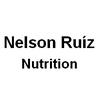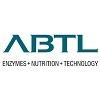Explore all the information on
Amino acids in poultry nutrition
Adequate provision of dietary amino acids is required to maintain normal immunocompetence and protection of the host from some diseases in all species (Beski et al. 2015). Therefore, the development of immune function in poultry will be promoted if they receive sufficient amino acids in their diets. The essential amino acids for poultry are arginine, glycine, histidine, leucine, isoleucine, lysine, methionine, cystine, phenylalanine, threonine, tryptophan, and valine. Out of these, the ones critical in practical diets are arginine, lysine, methionine, cystine and tryptophan.
Hear what Dr. John Thomson from AlzChem has to say about Guanidinoacetic acid (GAA) as a direct precursor of creatine...
Comments : 0
Recommendations: 1
An additional 40,000 metric tons of MetAMINO® per year from Singapore
Consistent implementation of methionine asset strategy, safeguarding long-term global supply security
Reducing carbon footprint from Evonik’s DL-methionine production in Singapore
9 March,...
Comments : 0
Recommendations: 1


Pullets to Layers – Ensuring a Smooth Transition in Cage-Free Systems
Suggested link
Introduction The poultry industry has experienced unprecedented growth in the past 70 years due to improved genetics, nutrition, housing, water quality and veterinary care driven by post-WWII consumer demands (Havenstein, et al., 2003). Modern-day poultry efficiently convert feed to meat and eggs, but genetic selection for improved performance may have inadvertently selected for a negative correlative response to other traits such as immune function (Cheema et al., 2003). The reader...
Comments : 0
Recommendations: 2
by Sam Shafer
Poultry scientists find that Asp+Asn, Glu, or Glu+Gln supplementation can partly make up for low crude protein levels in male broiler chicken diets
A new study led by poultry scientists at the University of Hohenheim suggests it is possible to reduce crude protein in broiler diets while still encouraging bird growth—as long as birds receive supplementation with several “nonessential” amino...
Comments : 1
Recommendations: 0
Nelson Ruiz (Nelson Ruiz Nutrition) explains the relevance of trypsin and chymotrypsin inhibitor activity, in this interview during IPPE 2023 in Atlanta, USA....
Comments : 0
Recommendations: 0
The objective of this study was to determine the relationship between in vivo amino acid digestibility and protease inhibitors in commercial soybean meal (CSBM). A total of 12 CSBM samples were analyzed for: (1) trypsin inhibitor activity (TIA) utilizing the new official AOCS method (Ba 12a-2020). (2) chymotrypsin inhibitor activity (CIA) by the latest optimized method of Liu (2022. J. Food Sci. https://doi.org//10.1111/17503841.16141), and (3) in vivo amino acid (AA) digestibility...
Comments : 0
Recommendations: 1
Dr. John Thomson from AlzChem explains some of the benefits of using creatine in breeders hens...
Comments : 0
Recommendations: 1
Can creatine supports muscle growth, the immune system or energy efficiency? In this interview, Dr. John Thomson from Alzchem responds to this question...
Comments : 0
Recommendations: 3


Supplemental Bacillus subtilis DSM 32315 modulates intestinal structure, microbial composition and improve the performance in broiler chickens
Suggested link
Dr. Piotr Stanislawski shares his experience with Engormix members on supplementation through feed or water, when and why do one or the other....
Comments : 1
Recommendations: 3
...
Comments : 0
Recommendations: 0
Introduction Coccidiosis is the most common parasitic disease caused by Eimeria spp., leading to over $14 billion economic loss worldwide annually (Blake et al., 2020). The most prevalent Eimeria spp. in poultry include E. tenella, E. maxima, E. acervulina, E. brunetti, E. necatrix, E. praecox, and E. mitis and have different level of pathogenicity and specific infection sites in the intestine (Cervantes et al., 2020). Eimeria spp. invade intestinal epithelial tissues and induce...
Comments : 1
Recommendations: 1
Introduction: Betaine has been known as a functional nutrient widely used in animal nutrition during the last decade. It’s the trimethyl derivative of glycine, and is present in many plants and animal tissues such as aquatic invertebrates and sugar beets. As a feed additive, betaine is commonly used as anhydrous, monohydrate, and betaine hydrochloride. According to the latest research, the nutritional properties of betaine HCL is equal to anhydrous while offering...
Comments : 0
Recommendations: 2
Investment will safeguard long-term supply of MMP to European methionine production hub
Improvements made possible by production process innovations
Increase in efficiency and safety at the site
Essen, Germany. Evonik has invested €25 million developing and expanding its methylmercapto-propionaldehyde (MMP) production plant in Wesseling, Germany, in the latest move to strengthen its world-scale global methionine production...
Comments : 0
Recommendations: 3
Introduction Acidifiers are combination of organic acids. Organic acid is a chemical compound from the class of fatty acids that have a pH below 7 Organic acids included in feeds in order to lower the pH of the feed, gut, & microbial cytoplasm thereby inhibiting the growth of pathogenic intestinal microflora. ...
Comments : 4
Recommendations: 1
It has been proposed that the metabolic energy requirements of free-ranging hens are up to 15% higher compared to caged hens due to the increased metabolic activity required for locomotion and thermoregulation (GfE 1999; Tiller 2001; Aerni et al. 2005). The aim of the study was to investigate the impact of various feed strategies on laying performance and egg quality of free-range laying hens. A total of 9,375 hens, placed amongst 5 flocks of 40,000 hens each were selected according to their...
Comments : 0
Recommendations: 0
1. Introduction The mucosal lining of the small intestine is a highly functional epithelium comprised of absorptive, secretive and sensory cells, which are constantly renewed by multipotent intestinal stem cells (ISC). ISC reside within crypts, and constantly proliferate for self-renewal and generation of progenitor cells, which differentiate into the functional cells that line lumen-facing villi (Carulli et al., 2014; Potten and Loeffler, 1990). Compartmentalization of the...
Comments : 0
Recommendations: 0
Hypothesis Guanidinoacetic acid (GAA) is synthesized in the liver and kidneys from arginine (Arg) and glycine (Gly) and subsequently methylated by S-adenosylmethione to creatine (2). Heat-stressed birds respond to the presence of higher uric acid concentration and changes in electrolyte balance by increasing the usage of osmoprotectants. These osmolytes are viable endogenous precursors for Gly (3). On the other hand, high supplemental lysine level on modern genetic broiler...
Comments : 2
Recommendations: 1
INTRODUCTION Least cost feed formulation relies on the assumption of additivity of digestible nutrients from the contributing ingredients. It is generally accepted that assessment of the nutritional value of individual raw materials underestimates their eventual contribution in a complex diet because of the often-substantial influence of endogenous loss. The premise is that a proportion of nutrients that leave the terminal ileum are inevitable (or “basal”) losses and...
Comments : 0
Recommendations: 2


Pullets to Layers – Ensuring a Smooth Transition in Cage-Free Systems
Suggested link
1 INTRODUCTION During the last decades, the productivity of laying hens has improved significantly, with higher number of eggs produced over the laying cycle and higher efficiency to utilize feed nutrients. This increase in productivity implies in a change in the requirements, and consequently, these hens become more demanding in nutrients, mainly amino acids (Elliot, 2008). Optimization of protein supply by understanding the amino acid needs of these hens requires a thorough...
Comments : 1
Recommendations: 1
INTRODUCTION Amino acids (AA) and crude protein (CP) intake during the rearing phase in broiler breeders have demonstrated to affect body composition and reproductive performance in the laying period (Joseph et al., 2000; Ciacciariello and Tyler, 2013; van Emous et al., 2013, 2015a, 2015b). Modifications of these nutrients added up to the adjustment of feed allocation may alter BW (van Emous et al., 2013; Soumeh et al., 2018), organ development (Lesuisse et al., 2017), egg...
Comments : 1
Recommendations: 0






.jpg&w=3840&q=75)



.jpg&w=3840&q=75)




.jpg&w=3840&q=75)

















